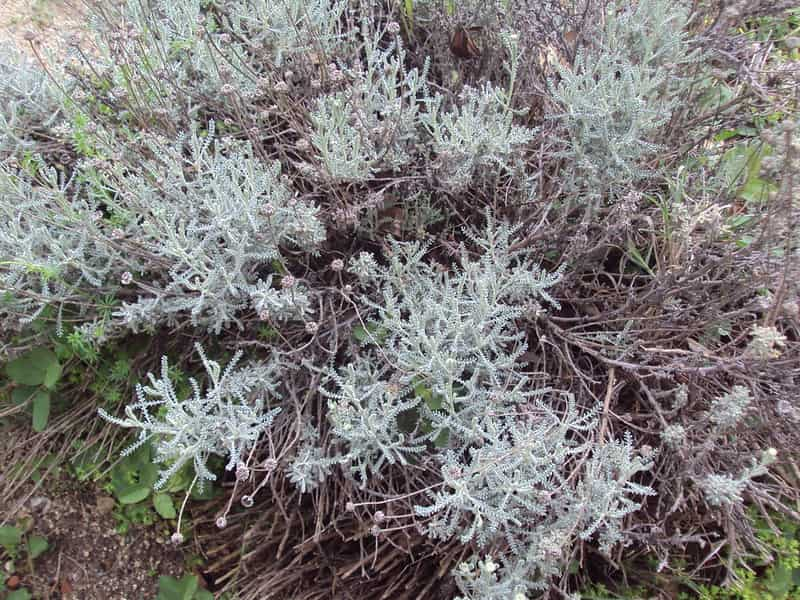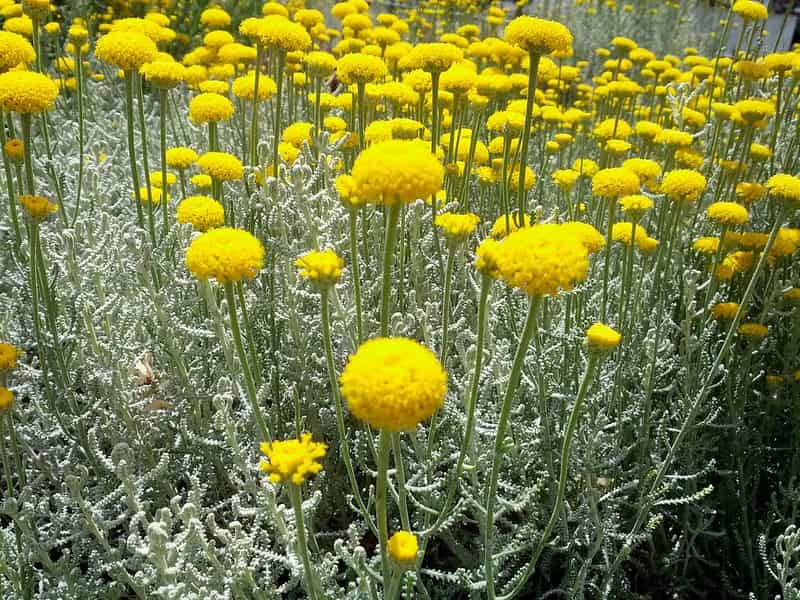Valued for its evergreen, most often silvery foliage, lavender cotton is also appreciated for its delicate fragrance. This small Mediterranean shrub is both drought and cold-resistant, and undemanding when it comes to soil, thriving in poor, even stony or chalky, but well-drained ground. Ideal for dry gardens, lavender cotton (Santolina) is covered with small cream or yellow pompom-shaped flowers that are easy to dry.
This low-maintenance bush has only one requirement: pruning. Or rather prunings, as it's best to trim it regularly throughout the year to maintain its rounded, compact shape. Follow all our advice to understand why, when and how to prune or cut back lavender cotton.
Essential tools for caring for lavender cotton
- Hedge shears: useful for trimming the foliage and shaping the plant to maintain a compact habit. They're also used for cutting back the plant;
- Secateurs for removing spent flowers.
Why prune lavender cotton?
Lavender cotton (Santolina), a member of the Asteraceae family, is magnificent in low borders, rockeries or flower beds thanks to its dense, compact habit. However, whether it's the well-known grey santolina (Santolina chamaecyparissus) or other varieties like Santolina virens, this shrub has a tendency to develop woody growth and spread haphazardly, much like its companion plant lavender. Without pruning, it quickly develops a somewhat "straggly" appearance.

Without pruning, lavender cotton loses its dense habit and develops unsightly woody growth
This is why pruning helps reshape its silhouette to form a beautiful, dense, rounded and spreading cushion. The foliage will be finer, more aromatic, and the base won't become bare. Pruning prevents woody growth and hollowing out of clumps. Additionally, pruning maintains the plant and stimulates its melliferous flowering and growth.
If you want your lavender cotton to form a neat, rounded bush, pruning is essential. Annual pruning is necessary, with twice yearly being recommended. These are the only care requirements it has!
When and how to prune lavender cotton?
Unlike many other plants, lavender cotton isn't at all bothered by severe pruning, either at the start of or during the growing season. So you can easily prune several times a year - the plant will only look better for it.
Prune at several times of year:
- In early spring, around March, as soon as the first leaves appear, give it a rejuvenating trim with shears, cutting young shoots back by two-thirds. For plants used in borders, you can prune into a square shape. Specimen plants prefer rounded pruning to form small cushions. In colder regions, this rounded shape also prevents snow from lingering and damaging the foliage. This pruning also helps balance the plant.
- In May, don't hesitate to trim again with shears to even out the clump. This may reduce flowering but ensures a beautifully regular shape.
- In September, just after flowering, cut back spent flower heads with secateurs and take the opportunity to level the stems. Don't hesitate to remove dry or stunted stems. Don't throw away the faded stems - you can dry them upside down to make dried flower arrangements. The dried foliage, with its camphor-like scent, makes excellent moth-repellent sachets for linen.

In September, prune the spent flower heads of lavender cotton
In autumn and winter, leave the plant alone. Pruning during these periods could make it more vulnerable to cold and frost.
When to cut back hard?
When lavender cotton reaches 3-4 years old, hard pruning may be needed. This is also essential if the shrub hasn't been regularly pruned. Over time, it becomes misshapen and grows in all directions. This severe pruning should be done in late winter, around March.
To cut back hard, remove old stems and branches as close to the stump as possible without damaging the collar. Don't worry - the plant will regrow vigorously with new stems filling out the base.
































Comments